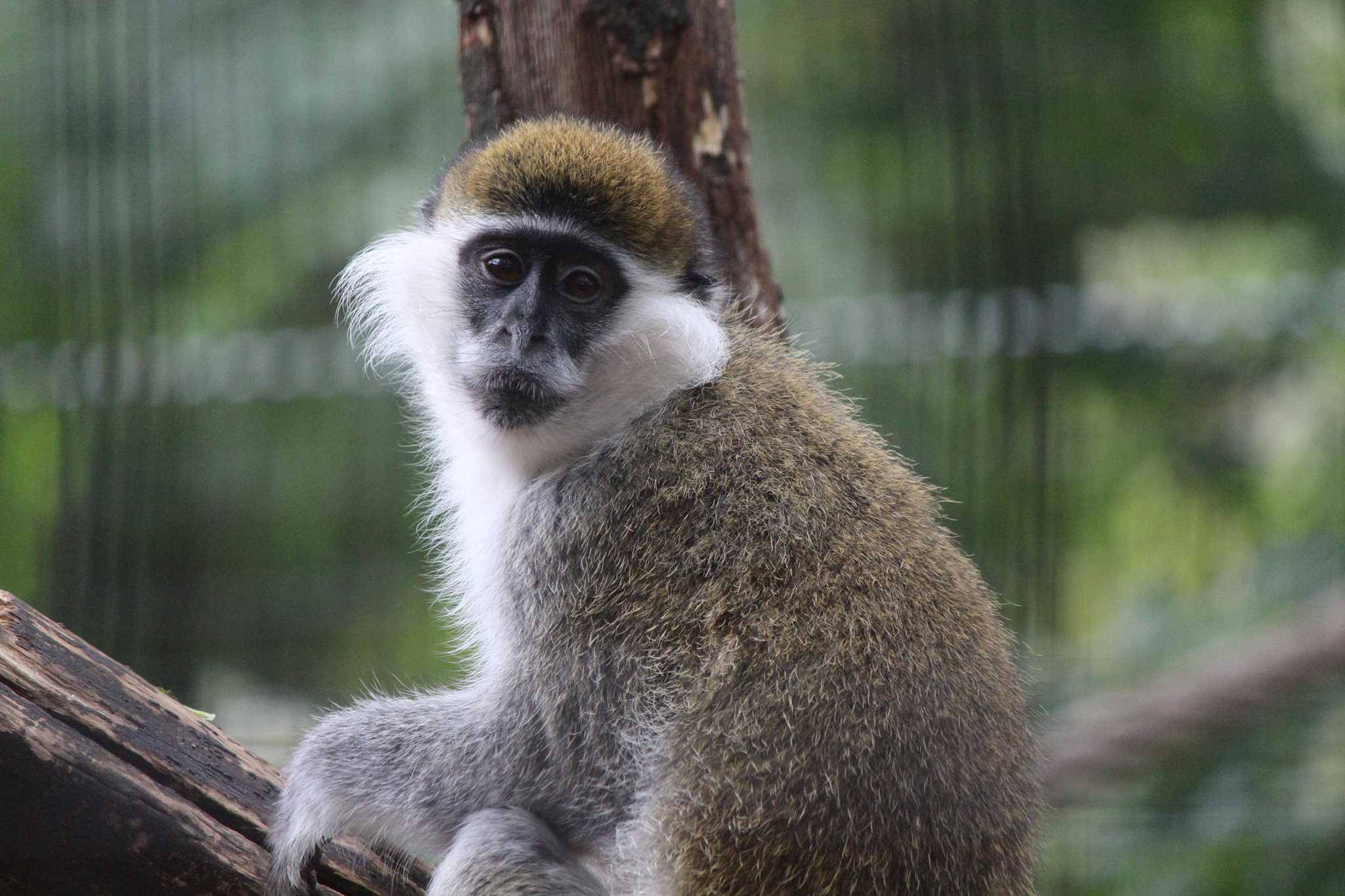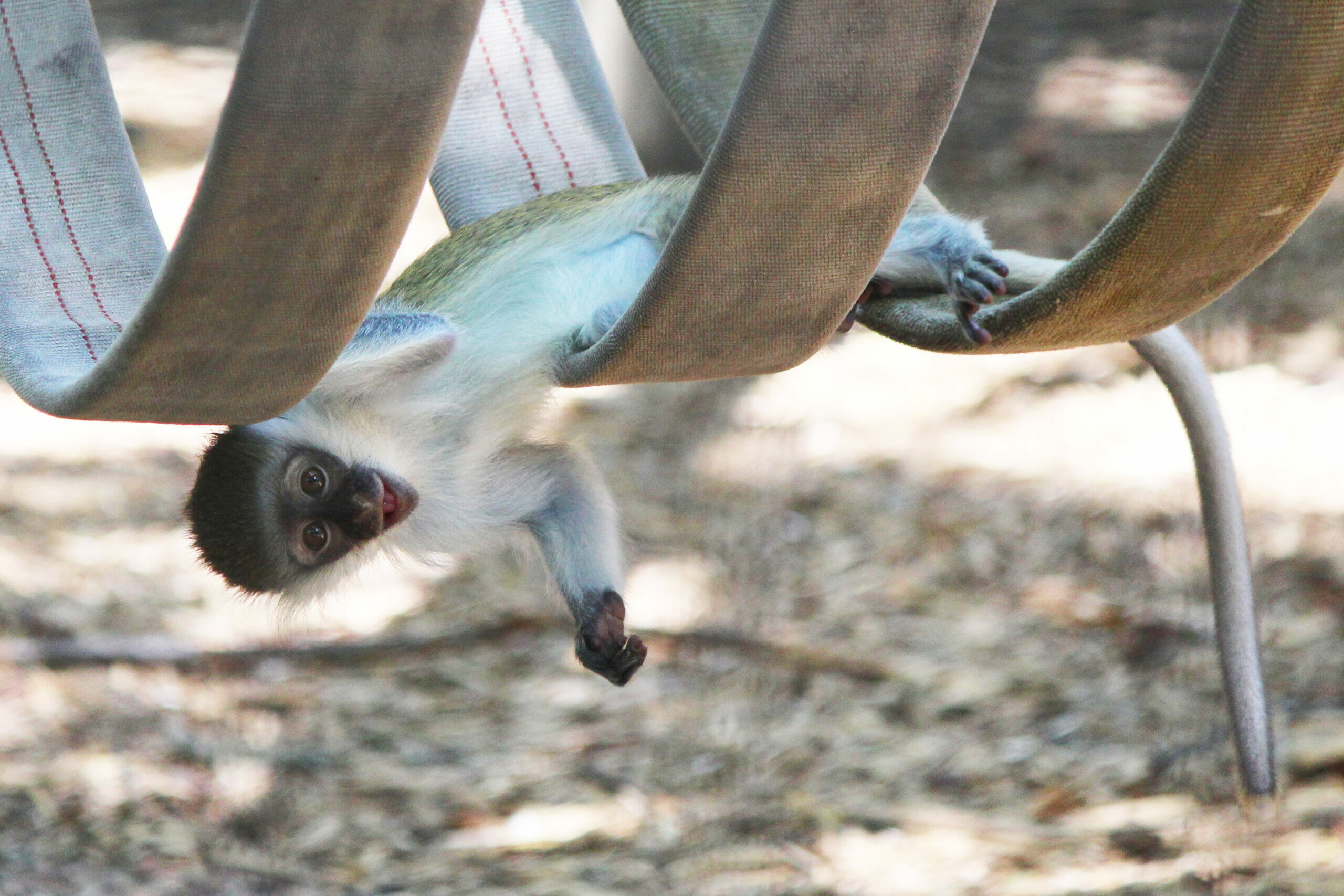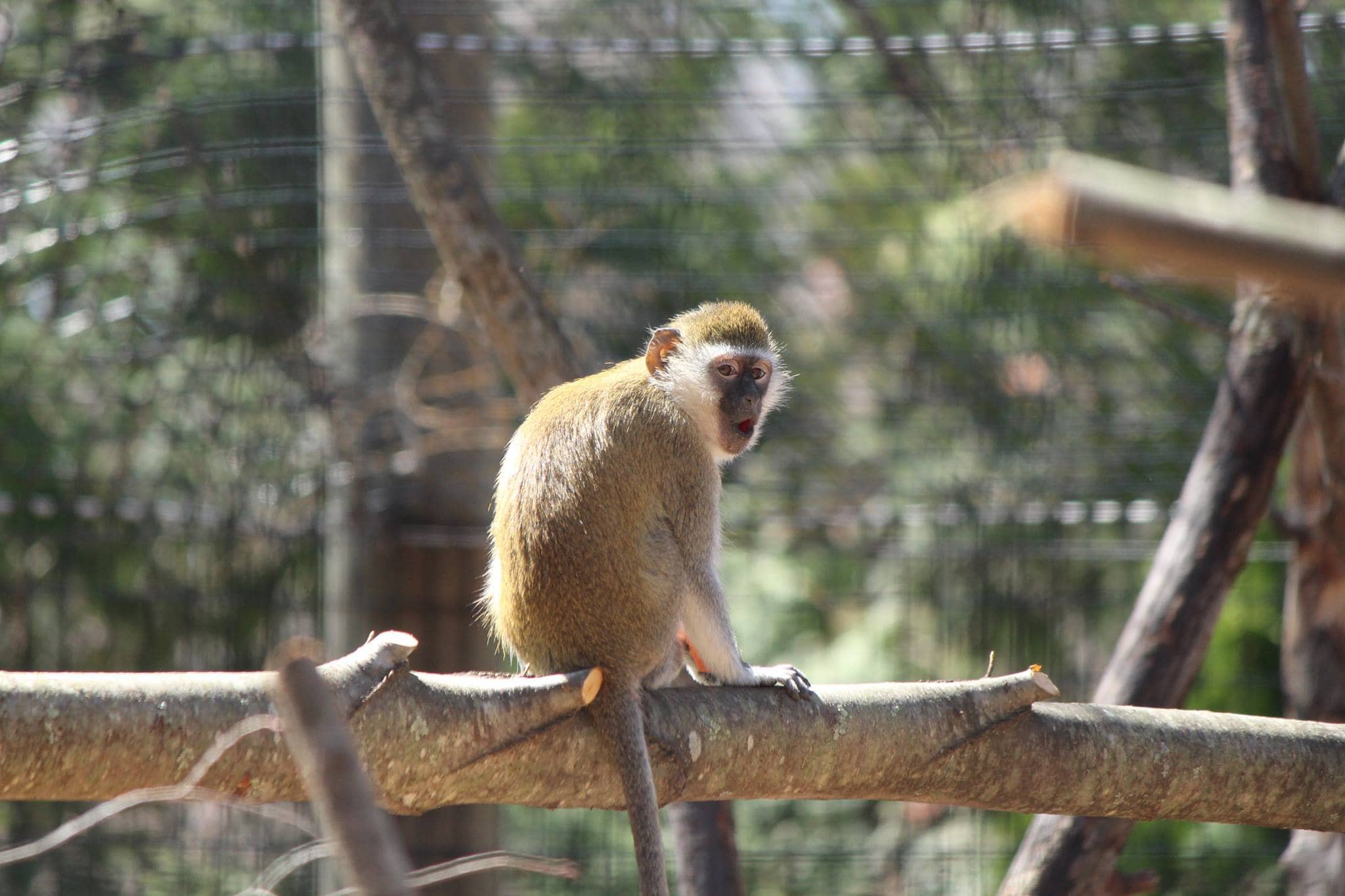Grivet Monkey
Chlorocebus aethiops
Class: Mammalia Order: Primates Family: Ceropithecidaee
Size
Weight: 6-9 lbs
Lifespan
Lifespan (Wild): 17 years
Lifespan (Captivity): up to 30 years
Diet
Primarily fruit, but they also feed on other plant matter, insects, eggs, and small vertebrates such as birds.
Habitat & Range
Woodlands and savannah of Ethiopia and Sudan
Interesting Facts
Grivet monkeys have cheek pouches. This adaptation allows them to gather food, store it in their cheeks, and eat it later while in a safe location. These monkeys have many predators including snakes, leopards, lions, large birds of prey, and even humans.
Grivet monkeys are diurnal meaning they are most active during the day. They spend most of their time in trees.
These monkeys have special alarm calls for different types of predators. This allows their social group to act accordingly depending on the threat. For example, if a grivet monkey sees a leopard and makes the corresponding call, then the rest of the group hides in the trees. If one makes the call for an eagle, then the others will hide in dense brush.



Conservation Status
Least Concern
Threats
This species is adaptable and has few major threats. They are sometimes even found living in urban areas. Their populations do experience pressure from deforestation, however.
